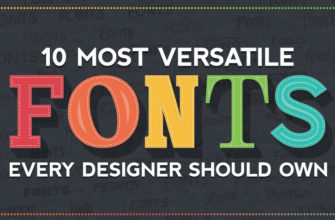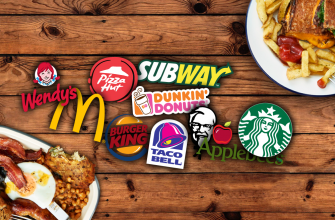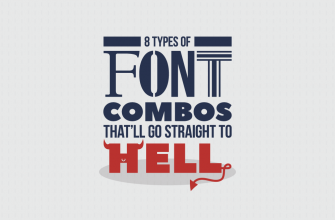Almost any design or website project will involve the art of playing around with type to create the intended effect. From a page replete with text to a few words, the font choices you make during the early planning phases will establish the tone for how your work is perceived. Fonts go beyond the apparent written meaning and communicate more than what appears to the eye. Fonts can help set a mood and can be leveraged to emphasize the inherent message and impact of text. Be it expressing yourself with kinetic typography or a more static one, designers are getting ever more interested in leveraging the power of words.
Do you aspire for a modern and glamorous look and feel, or a more classical, timeless panache? Is your text intended to enrage and stimulate the readers or fill them with a jovial, heartwarming joy? Do you want to “sound” logical and authoritative, or eccentric and quirky to your readers? Do you want the audience to feel a sense of urgency and a call to action or a placid calmness that helps them relax? Is your written work a techy, code-based piece, or an exciting, good-humored composition? Do you want your text to have a “feminine”, “elegant feel or a corporate, dominant one? Does your text need to comply with readability standards or is it being used primarily in logo design or as art? Before selecting typefaces for a project, it’s prudent that you answer these questions, lest your font contradicts the message you are trying to convey across.
Keep in mind that a typeface can say as much about the project as your written words on a page. It’s imperative to scrutinize typefaces thoroughly so that each depicts your projects in the proper light. Fonts elicit an emotional response from the readers, complement products, help to communicate the underlying meaning of a product, and employ visual cues to set expectations about the product. Therefore, it has become more imperative than ever to study the moods elicited by each typeface and capitalize on our knowledge to enhance the impact of content. Here’s a detailed Infographic to help you learn the various moods reflected by different typefaces:





Hi! What is this Modern Sans Serif font used in this infographic?
Hi Tulio, The font is Trajan Pro.
His question was about the “modern sans serif” font, not the “modern serif” font. These descriptions are not universally understood. “Modern” serifs also known as Didone typefaces were introduced in the 1860s, and your modern fonts seem to be more representative of 1960s. Interesting study.
Best infographic I’ve seen on the subject, by quite a margin, but James Hance’s right: it’s not Trajan Sans Pro—which is CAPS only, inspired by antique Roman inscriptions.
And this font’s too nice to remain anonymous. Please make our day and check your file! 🙂
Hi, Tulio….I love your descriptions on the moods each type of fonts emit! Very cool! I can’t help but correct typos, however….especially on such a beautiful graphic piece. Glamour is misspelled. Best….Karen
Hi Karen,
Thank you for your feedback.
We understand that ‘Glamour’ with ‘our’ is preferred in American English. However, some publications do use ‘glamor’ instead of ‘glamour’. But I get your point and we will fix it.
touche to me….”each type of font emits.”
Hi there! The smaller font under each word tells the actual name of the font. The “sparkling” one is called Sweet Pea font and the link is: http://www.dafont.com/sweet-pea.font
The clickable links to all of them are right under the image!
Thanks!